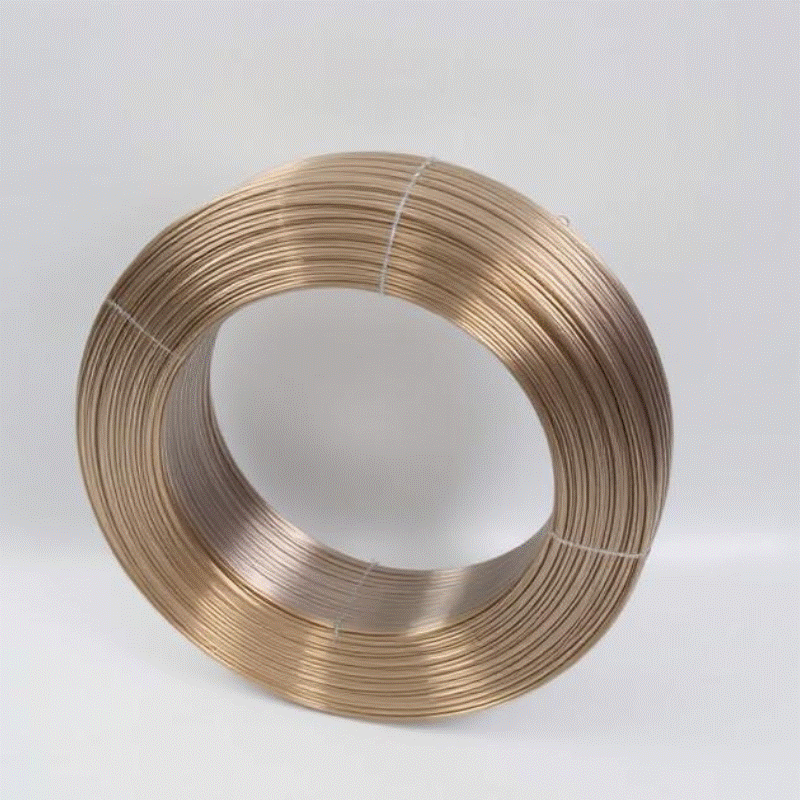How to Prevent Cracks in Aluminum Welding Using ER4943 Wire

Welding is an essential process in the manufacturing and repair of aluminum structures, but achieving strong, crack-free welds can be challenging. Aluminum Welding Wire ER4943 has emerged as a popular solution for many welding applications due to its high strength and excellent corrosion resistance properties. However, one of the key challenges that welders face is avoiding cracks, which can compromise the integrity of the weld. In this article, we explore some practical tips and techniques that can help you prevent cracks when using ER4943 aluminum welding wire.
Understanding the Causes of Cracking
Before we dive into the methods of preventing cracking, it's essential to understand what causes cracks in aluminum welding. Cracks typically occur due to several factors, including improper welding technique, incorrect heat input, contamination, and unsuitable filler materials. Aluminum is particularly susceptible to cracking because it has a low melting point and a high thermal conductivity, which means the material cools quickly. This rapid cooling can lead to thermal stresses that cause cracking, especially when the weld pool solidifies unevenly.
Choosing the Right Welding Parameters
One of the most critical factors in preventing cracks when using ER4943 aluminum welding wire is selecting the correct welding parameters. Ensure that the amperage, voltage, and travel speed are set appropriately for the thickness and type of aluminum you are welding. Too high a heat input can lead to excessive penetration, while too low can result in inadequate fusion. ER4943 wire, specifically designed for welding high-strength aluminum alloys, requires precise control of heat to maintain a balanced, strong bond.
Proper Pre-Weld Preparation
Proper surface preparation is another crucial step to prevent cracking. Aluminum surfaces need to be thoroughly cleaned before welding to remove any oxide layer, oils, or other contaminants that could affect the quality of the weld. Using a wire brush or chemical cleaner specifically designed for aluminum is recommended. Additionally, ensure that the material to be welded is free from moisture, as any trapped water vapor can lead to hydrogen embrittlement, which increases the risk of cracking.
Post-Weld Treatment
Post-weld treatment is just as important as the welding process itself. After completing the weld, allowing it to cool slowly is essential for preventing the development of cracks. Rapid cooling can cause thermal stresses and lead to cracking in certain areas of the weld. Using heat sinks or cooling blankets can help maintain a controlled cooling rate, particularly for thicker aluminum components.
Minimizing Stress During Welding
To further reduce the likelihood of cracking, it's important to minimize stress on the welded joint during the welding process. This can be done by controlling the positioning of the parts being welded. For instance, preheating the base material before welding can help reduce thermal stresses and allow for more uniform heating. Additionally, consider using multi-pass welding if necessary, as this allows for more gradual heat input, reducing the risk of distortion and cracking.
Proper Filler Metal Selection
Another way to prevent cracking in aluminum welds is by selecting the right filler metal. While ER4943 aluminum welding wire is specifically designed to reduce the risk of cracking in high-strength applications, it's still essential to ensure compatibility between the wire and the base material. Incompatible filler materials can lead to weakened welds and increased cracking risk. Always check the alloy specifications to ensure that the filler metal is appropriate for the material you're working with.
Work With Trusted Suppliers
Finally, working with trusted Aluminum Welding Wire Manufacturers like Kunliwelding can make all the difference when it comes to ensuring you have access to high-quality ER4943 aluminum welding wire. Kunliwelding's product line is known for its consistency and high performance, providing welders with reliable wire that meets the rigorous demands of industrial applications. Reliable suppliers ensure that the wire you are using has undergone proper testing and quality control, which can further minimize the risk of cracking and other weld defects.
In summary, preventing cracks when welding with Aluminum Welding Wire ER4943 requires a combination of proper preparation, careful control of welding parameters, and post-weld treatment. By following the right practices, you can achieve stronger, more durable aluminum welds. When sourcing your welding wire, partnering with reliable manufacturers like Kunliwelding ensures you get high-quality materials for all your projects. Visit www.kunliwelding.com for more information on ER4943 aluminum welding wire and other industrial welding products.
- Art
- Causes
- Crafts
- Dance
- Drinks
- Film
- Fitness
- Food
- Spiele
- Gardening
- Health
- Home
- Literature
- Music
- Networking
- Other
- Party
- Religion
- Shopping
- Sports
- Theater
- Wellness


